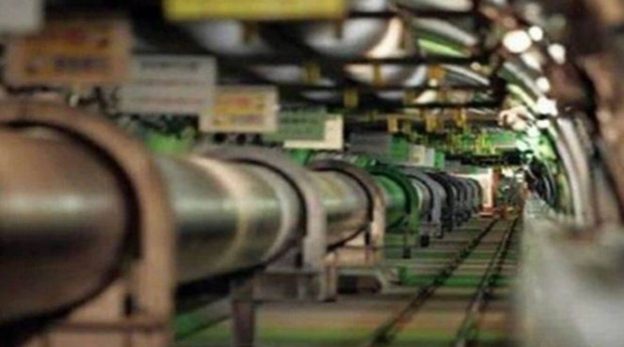On Thursday, the government unveiled the first phase of National Hydrogen Mission, which includes waiver of inter-state power transmission charges for 25 years for projects commissioned before June 2025.
Cutting cost of green hydrogen (GH) and making this environmentally-benign fuel commercially viable require massive investments by corporate groups, besides more incentives from the government and regulators, industry officials say. Viability and global competitiveness will be real only when the cost of GH is $2/kg or lower, meaning it has to be nearly halved from the current level.
On Thursday, the government unveiled the first phase of National Hydrogen Mission, which includes waiver of inter-state power transmission charges for 25 years for projects commissioned before June 2025. There will also be the facility where a green power producer can save surplus renewable power with discoms for up to 30 days. Viability gap funding and purchase obligations on key user industries are on the anvil, too.
Since manufacturing of GH (industry-scale electrolysis) is to be powered by renewable energy, it is also important that the cross subsidy charges for open access to green power plants – facility to buy power directly from the producers, rather than from distribution entities – doesn’t inflate the electricity tariffs to be paid by GH units, according to company executives, who FE have spoken to.
Parag Sharma, founder & CEO at O2 Power, one of the largest renewable power producers, said: “If green hydrogen producers locate the renewable power plants within their premises, the question of cross subsidy would not arise. But this would require huge capital investments and the overall cost equations will need to be evaluated.” He said he still believed that most of the large GH producers would likely set up captive power plants.
Apart from Reliance Industries (RIL) and Adani Green, JSW Energy and Acme Solar, state-run NTPC, Indian Oil Corporation, GAIL, and BPCL have already announced plans to produce green hydrogen. As the GH ecosystem is still evolving, RIL is also getting into Blue Hydrogen which is relatively less costly though not as benign as GH. Blue Hydrogen is produced by steam methane reformation, with emissions curtailed through carbon capture and storage.
A senior executive from a company, which has big GH plans told FE on condition of anonymity that since cross-subsidy charge/surcharge is in the domain of states, there may be a need for guideline by the Central Electricity Regulatory Commission for its waiver for renewable energy sourced by GH units. Cross subsidy charges vary between 80 paise/unit and 1.25 paise/unit across states; besides many states levy surcharges on open access transactions. “Renewable energy being an important raw material for production of green hydrogen and it accounts for 60-65% of the overall cost. Any extra burden in the form of duties and surcharges would make the projects non-viable, and delay green hydrogen adoption in the country by at least five years,” the official, quoted above said.
As such, GH offers a green fuel for long-haul transportation and be the energy source for heavy manufacturing sectors such as refineries, fertilisers, and steel industries which are now heavily dependent on fossil fuels.
Under the Electricity Act, companies can look at waiving off the cross subsidy charges by entering into a joint venture agreement with the suppliers of renewable power by buying an equity of 26% in the captive power plants. Hydrogen produced from renewable power is costlier than fossil fuels. It is even costlier than hydrogen produced from other sources such as coal and naphtha.
“While hydrogen produced from sources other than renewables cost anywhere between $1.4 and $2.5 per kg, green hydrogen costs around $3.5-4.5 per kg. A reduction of $1 per kg in the cost of green hydrogen would make it comparable to natural gas prices in India,” Debashish Mishra, partner at Deloitte India said in a report. “A 50% reduction in the present capital expenditure on electrolysers, which includes debt service and repair and maintenance costs, levelised cost of electricity from renewable sources and an improvement in the utilisation levels would help increase the adaptability of green hydrogen,” Mishra said.
Mohit Bhargav, CEO of NTPC Renewable Energy, said, the company is deliberating to reduce the cost of hydrogen production to $2 per kg levels by 2025. However, the major component of this process would be the cost of electrolysers and price of renewable power.
Going ahead, it is expected the government may provide a viability gap funding in the initial phases to reduce the overall cost burden for the green hydrogen producers. Besides, imposing sectoral obligations to replace grey hydrogen with green hydrogen, and allowing 10-15% blending of hydrogen into the gas grid, apart from creation of dedicated hydrogen pipeline and incentivising end-user sectors are steps which would help in this regard faster adoption of green hydrogen.
Goldman Sachs, in a report stated, that GH will be the key driver for installation of renewable power in the next decade.
Electricity costs drive 70% of hydrogen’s cost structure. We note 1 million tonne of hydrogen demand equates to 8 GW of installed electrolyser base requiring around 15 GW of renewable capacity. Hydrogen-related demand will likely become meaningful in the next decade accounting for 10% of overall electricity demand by 2040 requiring 121 GW of renewable capacity which would be 10% of total renewable installed capacity,” the report said.
“We have a buy rating on RIL, ReNew, and L&T to be key beneficiaries of rising green hydrogen demand. Although the benefits will likely accrue more towards the end of this decade as cost structures decline and demand pools become meaningful,” the Goldman report said.
https://www.financialexpress.com/industry/green-hydrogen-viability-hinges-on-cutting-renewable-power-costs/2438466/





